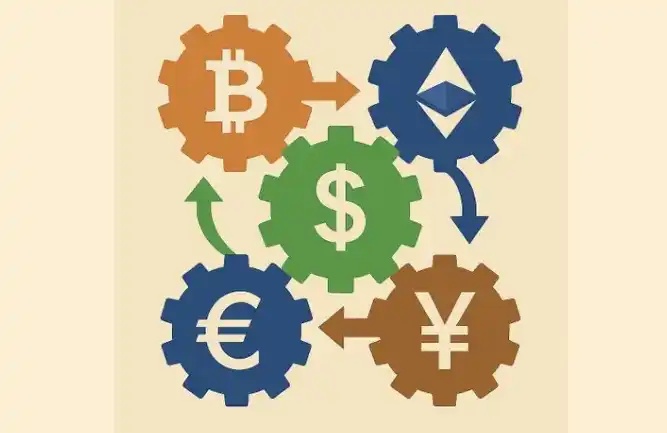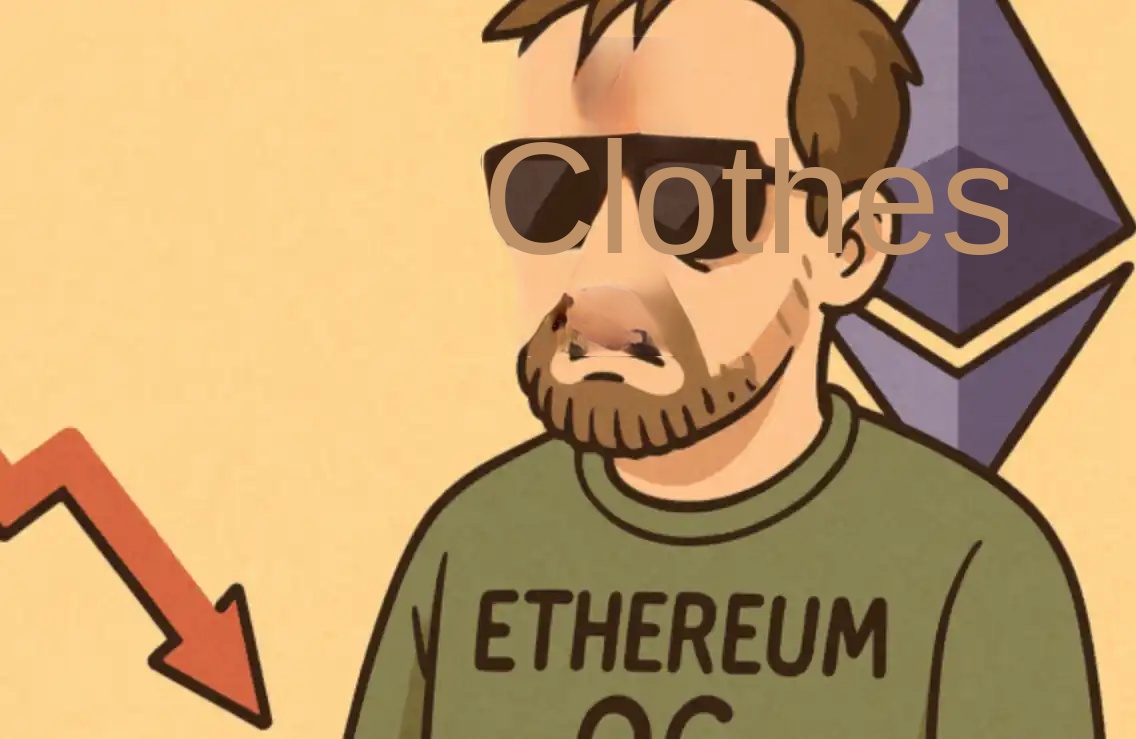Ethereum OG Lambasts "ETH Dilemma": Foundation Must Confront Four Major Strategic Errors, Once Held World's Strongest Hash Rate but Missed Opportunity
Original Title: "Ethereum OG Goes on a Rant: 'ETH Is Doomed' - Foundation Must Admit Four Major Mistakes, Held World's Largest Hash Power in 2021"
Original Author: 0xJigglypuff, from BlockTempo at DappReview
The Ethereum to Bitcoin ratio (ETH/BTC) hit a near five-year low of 0.02193, causing Ethereum supporters and investors to feel low pressure. Recent actions by Ethereum's founder and "key figure" — Vitalik, as well as the Foundation, have also sparked dissatisfaction in the community. Institutions have recently been pessimistic about Ethereum, seeing it unlikely to have any new breakthroughs in the near term.
This great public chain that created the concept of smart contracts, advancing blockchain technology from zero to one after Bitcoin, from one to many, and the potential integration with traditional finance. Why has it declined to this extent today? This has been a recent focal point of discussion in the Ethereum community. In some early Ethereum technical discussion groups, DappReview contacted an individual who claims to have joined the Ethereum development community in 2016 and exited in 2021, (codenamed ReverseScaleDragon). In private conversations, ReverseScaleDragon elaborated on the significant decisions and influences of Ethereum's development to date. This article will integrate ReverseScaleDragon's mentions of the major reforms and decisions made by Ethereum since 2021, as well as key failure points, with DappReview supplementing the story with additional details from that time.
Ethereum's Golden Age: Early 2021
When discussing Ethereum's most glorious era, nothing surpasses the early 2021 period following DeFi Summer. Not only did roles such as "on-chain detectives" emerge to address flash loan issues, but there were also numerous innovations in tokens, such as NFTs, liquidity fragmentation, and discussions on "farming" for fixed on-chain yields. The first generation of on-chain leverage and contract protocols also appeared. It was an era of abundant genius and continuous on-chain innovation.
In my career, the highest returns I have encountered, aside from Bitcoin and Ethereum themselves, were concentrated in projects from 2020 to 2021, especially in 2021, which should be considered the era where the most projects survived. Foundational assets like Ethereum, BNB, and SOL saw their valuations break into the billions, many of which were established during that period.
Compared to the "wild" and "crazy" atmosphere of many projects in 2020, in the first half of 2021, many founders were not only truly brilliant, but they also knew what kind of products the market needed and how to survive. However, towards the end of 2021 and the beginning of 2022, many projects were clearly intended to rug-pull. Therefore, I personally believe that the middle of 2021 was a watershed period. Those who entered the space after 2021 or 2022 are already part of a different atmosphere.
The Rise of the "ETH Deflation Narrative" with EIP-1559
During Ethereum's glorious days, when did it start to go downhill? In our discussions with the community and a poll initiated in the old OG group, with 117 people voting, 59 of them believed that the most significant decision and moment that impacted Ethereum was around the EIP-1559 proposal in mid-2021.
The Ethereum community began to experience division and conflict, leading to a small-scale Ethereum talent drain at the time. However, in community discussions, it was deemed that the most important impact was not the content of the proposal itself, EIP-1559, but rather the "deflationary asset" idea surrounding this proposal, which continues to significantly affect Ethereum's overall development to this day.
At that time, many Ethereum developers were barely making any money until DeFi Summer when transaction fees surged, enabling PoW miners to start earning, which may have caused some imbalance in Ethereum developers' mindset. I myself had a bit of that feeling at the time. Colleagues found that a few traders seemed to be using the extra fees mined by pools for trading, further inflating the Gas Fee. This was spread within the core developer circle as a "transaction congestion perpetual motion machine" idea, leading to a suggestion to burn these fees using EIP-1559. Of course, this proposal sparked a lot of controversy at the time, with some arguing that this idea was disconnected from reality. However, ultimately, amidst the community's two opposing factions, the "progressives" emerged victorious.
The impact of EIP-1559 is still profound and has lingering effects. At that time, many core developers believed that the "PoS" merge could be achieved in 2021. To push through EIP-1559 and future PoS advancements, they suddenly introduced a "deflationary asset" narrative. Therefore, there were many people and articles advocating for the benefits of PoS at the time, including the Ethereum-friendly media community Bankless. In that environment, it seemed that one had to catch this train to avoid being left behind by the times.
Developers believed that simply by holding Ethereum and maintaining it, they could earn interest, and the price of ETH would also appreciate. At the time, Ethereum developers all thought their careers were very promising. Looking back now, however, it seems that this vision was a bit too optimistic.
Community Politicization, Seeking "Ethereum Values" Legitimacy
The Scales Ethdragon mentions that the "deflationary asset" idea brought by EIP-1559 to the community is actually very lethal. This not only goes against the original Ethereum's concept and the Ethereum Classic split but also reveals that Ethereum's core developers politically sought a new slogan to counter Bitcoin's "digital gold." However, such a proposal and political idealism have brought significant unintended consequences in reality.
More importantly, the controversy surrounding EIP-1559 has given rise to a community ethos: the search for "Ethereum value," where those outside the tribe are to be excluded. This has plunged Ethereum into an atmosphere full of political maneuvering.
The core developers never imagined that Ethereum would have so few users today... Now all metrics, transaction volume, and Gwei fees have hit recent lows, and the price surge brought about by the "deflationary asset" has almost entirely retraced. Considering other factors, I believe Ethereum may continue to struggle for some time.
The Perfect Miss of the AI Era Bonus
After Ethereum completes the merge to PoS, it has also undergone several major upgrades, including the Shanghai upgrade and the Dencun upgrade. But do these upgrades really make a difference to Ethereum users? In a discussion group, we conducted a poll, with 117 people participating. Only 3 people believe Ethereum has made progress, 102 people believe there has been no progress at all, and 12 people are unsure.
Let's rewind to the eve of the Merge in 2022. How many artists were entering the NFT industry back then, complaining about Ethereum's lack of environmental friendliness? How many enterprises were seeking the integration of DeFi with traditional finance and experimenting in a sandbox, but worried that it did not align with the international ESG trend? However, these pursuits are now completely out of touch with the AI era.
Once, Ethereum had the world's largest computing power. If it could have held out until the AI era, the PoW layer could have transferred the computing power for effective computation. Then today's Ethereum might be the world's most important platform. Imagine a scene where Vitalik is a co-founder who can stand on par with Elon Musk, and his decentralized ideal that he wants to promote, would it be harder to achieve than it is now?
However, the reality is that Ethereum chose to reverse course in terms of the era. In contrast, Bitcoin, mining enterprises became the favorite computing power configuration scene for AI servers. Even though Bitcoin mining profits are limited, mining enterprise stocks and earnings are still surging alongside AI. Ethereum, on the other hand, missed out on all of this due to politicization.
Conclusion: Future Ethereum Prediction
In the future, the value gap between Ethereum and Bitcoin may continue to widen, and Ethereum may experience a significant pullback. Ethereum's brand influence is no longer what it used to be, and even if enterprises use Ethereum, the value created will not be reflected in ETH itself but rather in the enterprise's token or stock.
ETH/BTC may continue to decline for a long time, even if many enterprises join the Ethereum protocol, it will not be a bullish factor for ETH because the narrative of the "deflationary asset" has already been shattered...
Welcome to join the official BlockBeats community:
Telegram Subscription Group: https://t.me/theblockbeats
Telegram Discussion Group: https://t.me/BlockBeats_App
Official Twitter Account: https://twitter.com/BlockBeatsAsia
 Forum
Forum OPRR
OPRR Finance
Finance
 Specials
Specials
 On-chain Eco
On-chain Eco
 Entry
Entry
 Podcasts
Podcasts
 Data
Data


 Summarized by AI
Summarized by AI






